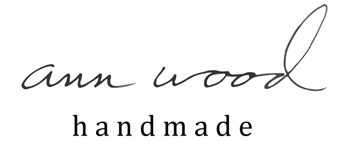
Who could be mad at these guys? Sew up some little fly friends, you’ll need a handful of scraps, stuffing and buttons. Pretty much. Their expressions crack me up. And the funny little legs definitely have “flyness”.
The idea for them first turned up in the daily paintings. I love to celebrate the less loved creatures and who is less loved than the dreaded house fly?

And why not make them cozy? They fit perfectly in the little wire beds.
let’s make a batch of dear little pests

supplies
- basic sewing kit
- embroidery thread (I’m using dmc perl cotton 12)
- buttons – 1/4 – 1/2 inch-ish
- cotton fabric scraps
- a little stuffing
It’s helpful to read through all the steps before beginning.
-

-
1.
-

-
2.
1. Pin the body pattern to 2 layers of cotton fabric – right sides together – and cut out 1/4 inch from the edge. With the pattern still attached, stitch around the edge of the paper. Leave open between the marks.
2. Clip the seam allowance at the marks.
-

-
3.
-

-
4.
3. With the paper pattern still attached fold the edges of the opening over and press.
4. Clip little triangle sections out of the seam allowance – be careful not to clip the seam.

Support free patterns like happy flies! And keep the awesome free projects flowing.
back to the flies…
-

-
5.
-

-
6.
5. Turn the body right side out. Use a chopstick or similar to push out the curves.
6. Stuff the body and stitch the opening closed with tiny whip stitches.
-

-
7.
-

-
8.
7. Cut out the stomach patch and stitch in place.
8. The wings are made from 2 layers of fabric. Pin the wing pattern to a double layer of cotton – wrong sides together – and cut out around the edge of the pattern (do not add seam allowance). Repeat for another wing.
-

-
9.
-

-
10.
9. Stitch all the way around the edge of both wings with contrasting thread – about 1/8th inch from the edge.
10. Stitch buttons close to the edge of the head. I used a half inch button here – you can use 2 or 4 hole buttons.
-

-
11.
-

-
12.
11. Stitch two straight lines in contrasting thread to finish his simple features.
12. Pin the wings in place. The short side goes in the center with the edges overlapping slightly. Make a few stitches in the center and down the side. Stitch with the same color thread over your previous stitches.
-

-
13.
-

-
14.
13. Make a knot 4 inches from the end of your leg thread (I used dmc perl cotton #12). Insert the needle into the side seam at the top to the stomach patch.
14. Bring the needle out the other side until the knot catches and make a knot at the seam.
-

-
15.
-

-
16.
15. Make a knot in the thread and before tightening it use the needle to pull it down the thread util it is 1/2 inch from the body. Tighten the knot.
16. Trim the leg about 1/2 inch from the knot. Repeat the knot and trimming on the other side.

17. 1/2 inch below the first legs add the next two. For the last two legs Make a knot 4 inches from the end and put the needle in 1/2 inch from the bottom of the body. Bring the thread out the other side until it catches and make a knot at the seam.
-

-
18.
-

-
19.
18. Make a knot 1 inch from the body.
19. Trim the leg 3/4 inch from the knot. Repeat the knot and trimming on the other side.

hello fly friend!
Do you know somebody who needs an aggressively friendly fly? Is there an adorable swarm in your future? Let us know in the comments.











































































































































